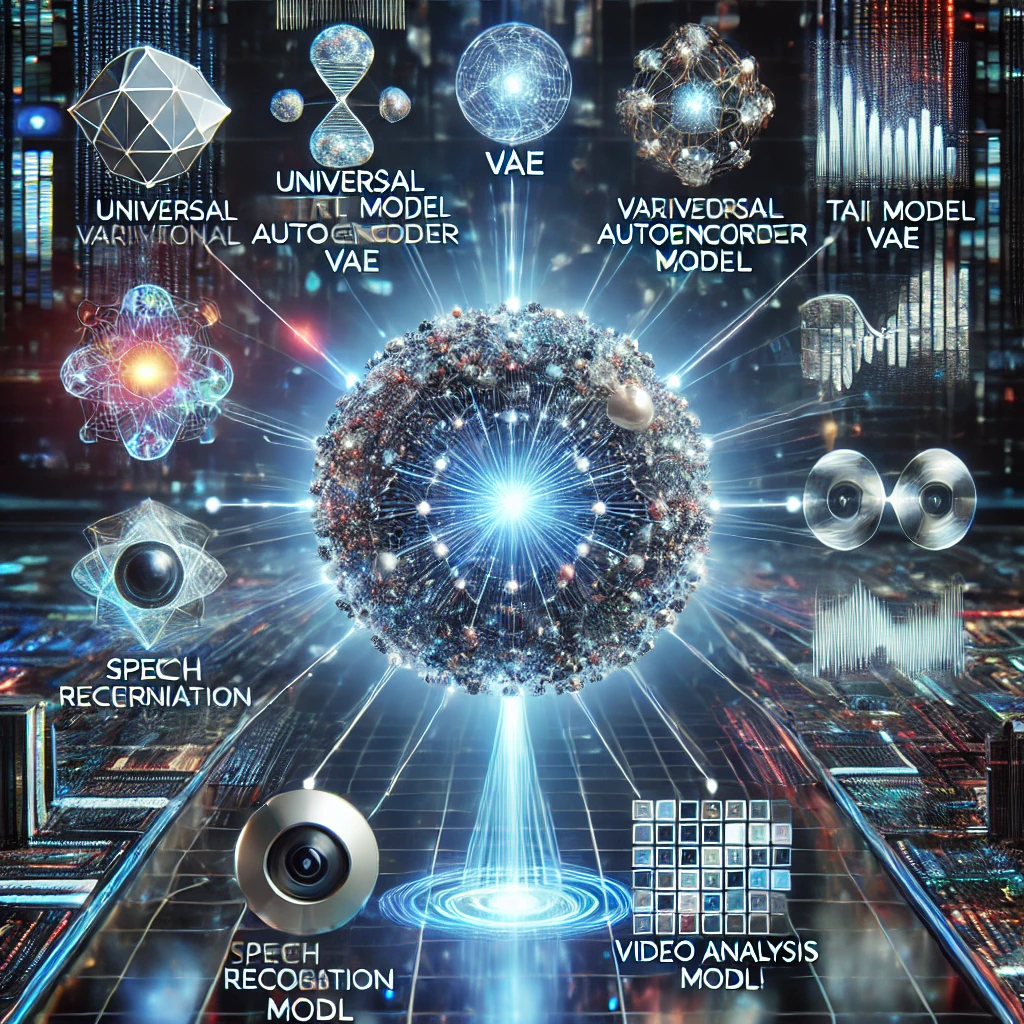The current AI ecosystem is a fragmented mosaic of architectures, data formats, and processing pipelines. Every model — whether it's for natural language processing, computer vision, speech recognition, or multi-modal generation — relies on domain-specific encoders and highly customized data handling pipelines. This fragmentation restricts interoperability, increases development friction, and limits the ability to seamlessly combine or transition between models.
To break these silos, the open-source community must rally around a game-changing concept: the creation of a Universal Variational Autoencoder (VAE) and a Universal Encoder capable of handling all data types — text, images, audio, video, 3D point clouds — in a unified, standardized latent space. This is not just a technical optimization. It’s a strategic imperative for ensuring the long-term viability, accessibility, and sovereignty of open-source AI.
Why a Universal VAE Matters
A Variational Autoencoder (VAE) is uniquely positioned to serve as the backbone of this universal framework. By compressing data into a continuous, structured latent space, a VAE can preserve semantic meaning across data types while drastically simplifying cross-modal processing.
A Universal VAE would act as a central intermediary, ingesting data from any source — text, images, audio, video — and projecting it into a single, interoperable latent space. This would enable:
Seamless Multi-modal Interoperability: A text-to-image model could communicate directly with an audio synthesis model or a video captioning engine using a shared latent representation.
Silo Reduction: Models across different modalities (text, vision, audio) could leverage the same datasets and training pipelines without rigid format conversion.
Cross-domain Training: A universal latent space would encourage training models on mixed data (text, images, audio) without separate pipelines for each modality.
The Role of a Universal Encoder
The Universal Encoder is the other half of this equation. It would serve as the front-end translator, capable of ingesting raw data — text, images, audio, 3D structures, or even biological sequences — and mapping them into a standard latent format understood by all downstream models.
Unlike current domain-specific encoders like BERT (text), CLIP (image-text), or Wav2Vec (audio), this universal encoder would:
Enable Model Portability: Models trained using the Universal Encoder could seamlessly transfer across domains or tasks without retraining their input layers.
Future-proof Data Pipelines: New data types (sensor data, VR streams) could be added to the system without breaking compatibility.
Slash Development Costs: Standardized data representation drastically reduces the complexity of preprocessing, training, and fine-tuning workflows.
Why Open Source Needs This Now
The open-source AI ecosystem thrives on collaboration, transparency, and reproducibility. However, the lack of unified data pipelines and latent spaces undermines all three pillars.
A Universal VAE and Encoder — developed in the open, governed by a transparent community process — would:
Ensure Technological Sovereignty: Avoid dependence on proprietary data formats imposed by Big Tech.
Democratize AI Access: Allow developers, researchers, and creators worldwide to build on a common infrastructure, regardless of domain expertise.
Enhance Reproducibility: Standardized encoding would make experiments easier to replicate and compare, improving benchmark reliability.
Ethical and Cultural Dimensions
Standardizing data encoding isn’t just a technical challenge — it’s a cultural and ethical one. Who decides what gets preserved in the universal latent space? How do we avoid cultural biases from dominating that representation?
A Universal VAE/Encoder project must include:
Global Governance: Representation from underrepresented regions, languages, and cultures.
Diversity Audits: Periodic reviews to ensure the universal latent space reflects humanity’s full diversity.
Open Ontologies: The latent space must dynamically expand to include new concepts, languages, and data types without privileging Western or commercial biases.
Towards an International Consortium
This isn’t a project for a single lab or company. The creation of a Universal VAE and Encoder requires a global open-source consortium, involving:
Research institutions
Universities
Open-source foundations
Independent developers and domain experts
Such a consortium would:
Define the Universal Latent Space format.
Build conversion tools to map existing data (text, images, speech) into the universal format.
Maintain a calibration dataset spanning all languages, cultures, and modalities.
Publish an Ethical Charter ensuring cultural balance and equitable data representation.
Infrastructure for the Future
This isn’t just an engineering project — it’s the foundation of a global knowledge infrastructure. Much like libraries preserve books or scientific archives store datasets, a Universal VAE and Encoder would preserve contextually rich, machine-readable knowledge, accessible to all current and future AI systems.
By acting now, the open-source community can ensure:
No culture or language gets left behind.
No model gets locked into proprietary ecosystems.
No innovation is blocked by siloed data practices.
This isn’t about standardizing for convenience — it’s about creating the AI backbone for the next century.
Concept Diagram (for Visualization)
A central Universal Latent Sphere, with data streams flowing in from text, images, audio, video, and other sources. Each stream passes through the Universal Encoder, which projects the data into the shared latent space. All downstream AI models — from image generation to speech synthesis to scientific discovery tools — read directly from this universal space.
This is the data fabric the open-source community desperately needs to maintain its edge and independence.
